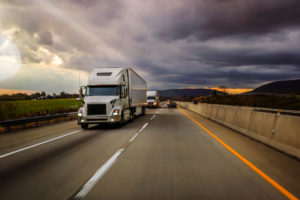By Brian Cooley, CNET
If you’re blasé about autonomous cars, don’t throw self-driving trucks out with them. Both aim to automate activity on the same roads but the usefulness and likelihood of success for trucks outshines that of personal cars. The $720 billion US trucking business that employs 900,000 drivers (and would love to employ more) is at the heart of virtually everything in our economy; as Jimmy Hoffa said, “If you’ve got it, a truck brought it.” Here are the main companies who may rewrite that bromide to “a truck brought it — by itself.”
Otto
It may seem odd to start this list with a defunct company that was absorbed into Uber and then dissipated when Uber dumped its self-driving dreams, but Otto kicked open the door for self-driving rigs in 2017 with a headline-grabbing beer run that successfully covered 132 miles across Colorado. Prior to that few people were thinking about self-driving big rigs, still trying to wrap their heads around autonomous passenger cars. Since then I would argue that commercial trucks of all kinds have leapt ahead in the race to achieve and justify vehicle autonomy, and Otto helped to set that table.
Aurora
Aurora is partly built on its 2020 acquisition of Uber’s self-driving tech and now calls its fleet offering Aurora Horizon. Like many on this list It will be offered as a subscription service to fleet operators via trucks from established brands. Aurora Horizon is starting in Texas and then expanding around the Sunbelt before reaching the rest of the country as commercialization begins in late 2023.
Einride
Einride is developing an autonomous truck called the Pod but is perhaps just as notable for its smart electric trailer, which can be hitched to an electric truck to provide up to 400 miles of added range along with intelligence about its loads and usage. Another interesting wrinkle is Einride’s vision of using remote driver assistance, not unlike what we see applied to military drones.
Embark Trucks
Embark is focused on the software that makes trucks drive themselves as well as on establishing a network of rock-solid routes on which they’ll do so. Partnerships with Volvo, International, Freightliner and Peterbilt suggest a wide net being cast to deliver Embark’s promised 10% fuel savings, 40% time savings and 300% revenue growth per truck.
Kodiak Robotics
Kodiak Robotics boasts of how well its autonomy can stop a truck, not just make it go. Kodiak argues that all vehicle autonomy is going to encounter equipment failures or unworkable road scenarios that need to be handled with a safe, solid fallback plan. That addresses the No. 1 fear I hear from average drivers about having autonomous rigs on the road around them.
Locomation
Locomation stands out with an human-centric vision: Autonomous Relay Convoys that pair up two trucks and two drivers in a lead-follow arrangement. The front truck is manned by a driver actively overseeing autonomy while the rear truck operates as a sort of following drone with a relief driver at rest. This doubles up the smarts of the lead truck at the front while rotating drivers in a way that can raise truck utilization to 20 to 22 hours per day. The dual driver technique is reminiscent of how airlines execute the longest transcontinental flights efficiently.
Plus
Plus self-driving tech is designed to be retrofitted to existing trucks or installed as an upfit option on a new truck. This reflects an awareness that commercial trucks are seldom swapped out on a whim like personal cars. Plus promises that its PlusDrive tech can save operators 10% of their current fuel usage, a major enticement on vehicles that consume a lot of it.
Torc Robotics
Torc was born from autonomous drive team at Virginia Tech that was successful at the historic 2007 DARPA Urban Challenge, which many recall as the big bang for autonomous vehicles. Torc envisions a fully qualified driver always being on hand to take over if need be in true Level 4 style.
TuSimple
TuSimple is among the companies focused on developing a network of routes and depots, or launch pads as it calls them, that are plied by its trucks. Moving freight along these high-value routes to the launch pads where other trucks pick up the trailer for final delivery is reminiscent of a railroad model. High-volume shippers would have the option of running their own fleets of TuSimple enabled trucks to directly serve their locations.
Waymo Via
Waymo Via gets a lot of headlines since it’s a Google driverless tech effort recently paired with Uber in which Waymo will deliver the autonomy while Uber contributes the “Uberization,” meaning optimizing need and capacity similar to how it helped revolutionize the matching of rides and riders. Waymo Via is a formidable duo, at least in reputation.
People often ask which of these companies will send big trucks out on highways without a soul on board, shuddering at the prospect. Most of these efforts are Level 4, meaning a driver is still available, but even the firms imagining Level 5 complete autonomy won’t make that decision on their own: Fleet operators, their insurers and federal regulators will have the final say, especially in a sector of vehicles that is so heavily regulated as big trucks.
As for timelines, a clear bubble of commercialization is growing around the 2023-to-2024 window when most of these companies suggest they will hit their strides with offerings at some scale.

